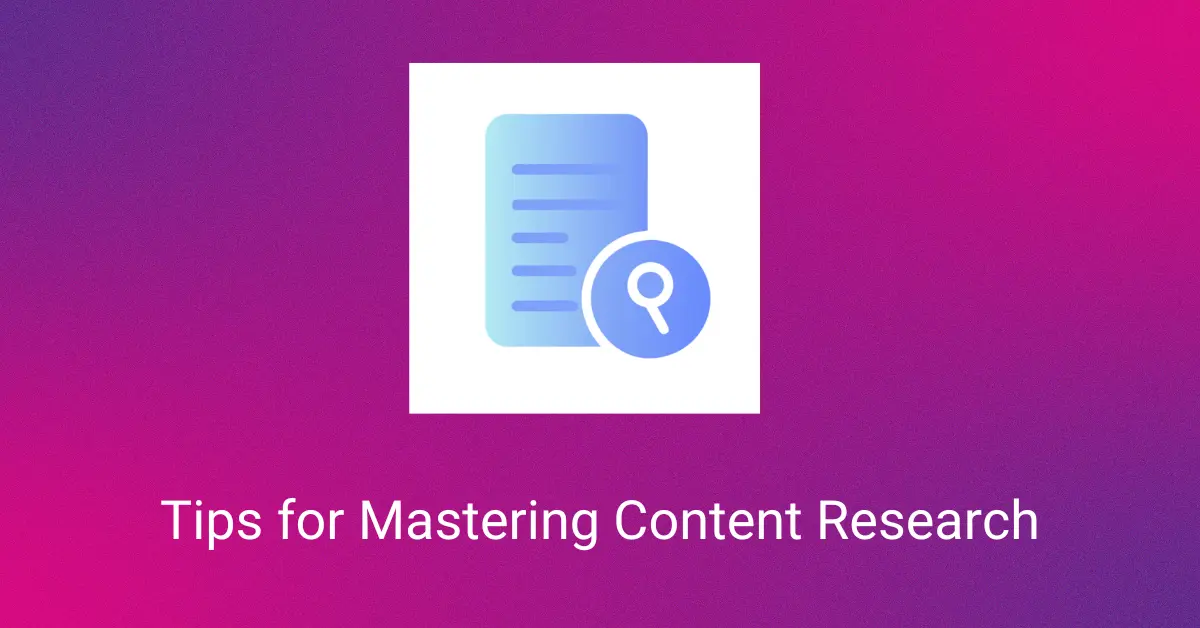A Content marketing strategy offers monumental opportunities for every brand and business. For instance, when you have a robust strategy, you can market your business more powerfully. Having clear and helpful content can steer your online reputation, simultaneously also helping form a community and develop keen advocates of your brand.
What is Content Marketing Strategy?
A content marketing strategy is a detailed plan where you use different forms of content, either audio, visual or written, in order to achieve specific business targets. An effective, and valuable content marketing strategy can augment business plans and attract a broad audience base during every specific stage of the funnel – helping keep them engaged even after they have purchased or availed a service.
Assuming that your motive is to improve brand awareness, you can implement a content marketing strategy that pivots on SEO segments in order to elevate website visibility and online presence on SERPs.
Several new businesses opt out from including a content strategy because they do not consider it one of the important components of building impression and driving traffic. Contrary to common belief, high-quality content can potentially act as an indispensable catalyst towards building trust and a stronger user base in the long run.
According to Kristina Halvorson and Melissa Rach, “Content strategy involves the planning, governance, creation, and maintenance of content, whereas content marketing strategy focuses on the narrow discipline of marketing such content.”
A content marketing strategy mainly addresses how content marketing combines with other processes, such as sales and operations, to bring highly effective results.
Why do marketers need a content marketing strategy?
Content marketing has been helping businesses and brands create reliable, yet economically sound sources that help bring better website traffic, alongside new leads. While creating only one blog post can certainly obtain steady organic traffic, a distinct embedded link redirecting to an e-book or any other attention-worthy tool can potentially continue generating leads as times pass, even long following the day you publish it. A content marketing strategy is considered an imperative resource for marketers because it helps answer the questions audiences might have, and simultaneously develop trust to boost conversions. It also helps generate revenue through several components, like distributed content.
Important elements of content marketing strategy
1. Positioning your brand
An insightful and clearly defined brand positioning can help you to offer a consistent user experience. It can also incite the development of your brand image via every activated content marketing channel. Questions like what is your present competitive landscape, and the particular brand value your product or service has can help begin the process of positioning your business. In fact, it is best to ask questions that can augment the procedure:
– Who are my base potential customers?
– What is the major form of experience they require?
– How do my competitor brands market their products or services?
– What makes my brand better than the rest?
2. Define your owned media
In order to help your brand become a reliable content publisher, you need to define your owned media. In simple words, you need to provide evidence of whether your content offers any unique value or not. In fact, it is upon you to prove whether or not your brand stands out from the rest. It is best to begin researching and analyzing the information your base audience is searching for. Following this, start researching several major competitor content strategies in order to find yours. Many businesses only begin focusing on their competitors, and shift attention from content creators.
3. Identify Business goals
When you offer value to your base audience, they will drive back to your brand. This is one of the major reasons why a successful content strategy is integral. However, content marketing should not alone attract new followers, but also steer your business plan forward. Identifying your business goal and then sketching a content marketing blueprint can guide your brand towards the target. Alongside that, create a detailed business case document to have a clear view of the benefits, costs and potential risks that might arrive after applying Content marketing strategy.
4. Strategic plan
It is important to venture out and plan before you publish anything. A strategic plan should pivot on the goals you set, and the road to accomplish them. A strategic plan can assist you in contemplating through every phase of your content strategy. In a nutshell, it can help you in chalking out the audience you want to reach via several content marketing tactics. Simultaneously, having a strategic plan also helps deliver appropriate content with estimated and equally targeted results.
How to create a content marketing strategy
1. Define goal Determine
Your content marketing strategy needs to have a detailed and thorough mission statement. This mission statement can help you analyze and narrow down the factors that are essentially more significant than others. This way, your content strategy can stay detailed, and especially on the track. Most importantly, your content marketing mission statement should state a few things and outline around them:
– The audience you have targeted
– The kind of content you are going to use in order to reach them
– The value they can generate
2. Build KPI’s
One of the key ways to accomplish the goals you have set is by estimating them, as well as being particular about them. Speaking of which, setting Key Performance Indicators (KPIs) is integral for your content marketing strategy. Having KPIs can be utterly invaluable, especially because it will outline the milestones by offering insight regarding the time you achieved a specific goal. It can potentially comprise of many different facets, including but limited to revenue, SEO, sales – among many other factors, such as social media metrics. In a nutshell, you can brainstorm ideas to acquire more signups or gain a specific number of new email subscribers, among others. You might equally want to spend time estimating marketing expenditure and lots more in the list.
3. Create a Buyer persona
Prior to outlining a successful plan, you need to sketch out the target audience for your content, also otherwise known as a buyer persona. Understanding your audience can help you brainstorm better ideas since you will know what content they are looking for. Producing user relevant content can help your audience not only to read more, but convert equally. Reorienting your audience parameters via market research every year can assist you in growing your audience base.
4. Assess your current position
Many businesses have already published content that is both relevant and value based. It includes but is not limited to blogs, podcasts, social media content – among many others. It is important to identify whether the content that you are publishing is helping meet the goals you have set or not. Assessing a current position is always a good decision before chalking out a detailed plan. In order to assess your position, carry out a content audit and identify the gaps to analyze its value and usefulness. Use a URL crawler to create sitemaps, explore duplicate pages and more. Finally, analyze how your content is working and make changes if necessary.
5. Audit your content
Carry out a content audit in order to distinguish between the top performing and low performing content you have. With this information, you can navigate forward with your business. However, if you have been part of the business for quite a while, reviewing your content marketing efforts from last year should be vital. By analyzing the same, you can determine what are the few things that you can tweak to achieve newer goals. A content audit can help you determine options that can best go by your audience.
6. Choose a content management system
There are several integral segments of content management, much like content creation, content analytics, content publication and more. Your brand might want to invest in the same in order to track, manage and create content in a rather efficient and sustainable manner. It is with CMS that you can plan, navigate, publish and measure the outcomes all in just one singular place. A CMS can help you modify, reorient and evaluate the results of a content, especially in a way that it can provide insight about which path you are moving on.
7. Decide which type of content you want to create
In reality, there are several choices regarding the content you can create – including written content documents such as e-books to audio and visual contents like podcasts and videos. The content you are willing to publish depends on the blueprint of your brand, and the content that best suits it. Some of the major content formats include blog posts, ebooks, case studies, videos, podcasts, templates and many others. Have a detailed plan about the content you are going to publish to help your brand convert leads.
8. Find new content ideas
It is important to acquire newly oriented ideas in order to keep your content marketing strategy fresh. You can keep track of several trendy topics via many services like Feedly RSS feed which offers industry related topics to brainstorm ideas. There are several other options to go for as well like:
– BuzzSumo: This company has been offering numerous market research tools, out of which one utilizes social media shares to evaluate whether a content is attention worthy or not.
– BlogAbout: It is another famous blog title generator. It often offers content ideas via headline formats wherein you are allowed to fill the blank spaces with any subject of your wish.
9. Select your marketing channels
Selecting your marketing channels is one of the primary steps of a successful content marketing strategy. It is important to recognize where a brand stands and if it has a successful online presence. Ideally, you should circle around what is working best and further expand from that point. It is best to take hold of one factor rather than trying to complete everything at once. You might want to look at the distinctly charted according to the “shares by network”, “shares by content length or type”, or “the top content of last year.” It can help you target the channels that best generate outcomes.
10. Publish and distribute your content
The marketing plan you outline should surpass the type of content you are going to create. It should also have details about how you will organize the content. After carefully thinking about the goals of each content, you are required to publish it. The major element of it all is distribution and marketing. It is partially because the outcome you want would not be accomplished if your planning is not appropriate. Try setting a schedule for distributing your content on social media platforms. It is best to equally distribute your content via email marketing too. You should take the initiative to notify relevant influencers in order to spread the word beyond the boundary.
11. Measure result
Now it’s time to assess the results your content strategy has generated. To do so, you should reach out to the KPIs you’d set prior to analyzing whether you hit the target results. Either way, you can easily take help from Google analytics to scrutinize the performance of your website. Other than that, you can also measure its social sharing activities via several tools. For having a better outlook, take a brief but detailed look at the web analytics and measure the results likewise.
Bottom Line
Content marketing strategy in times where businesses are booming is an integral tactic to use. While the procedures to deliver worthy content is changing day-to-day, the core motive still remains untouched – much like developing a content that feeds value to users. Therefore, it is best to practice your content marketing strategy in a way that can benefit users.
Popular Searches
How useful was this post?
0 / 5. 0

















